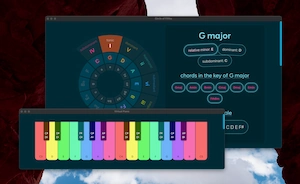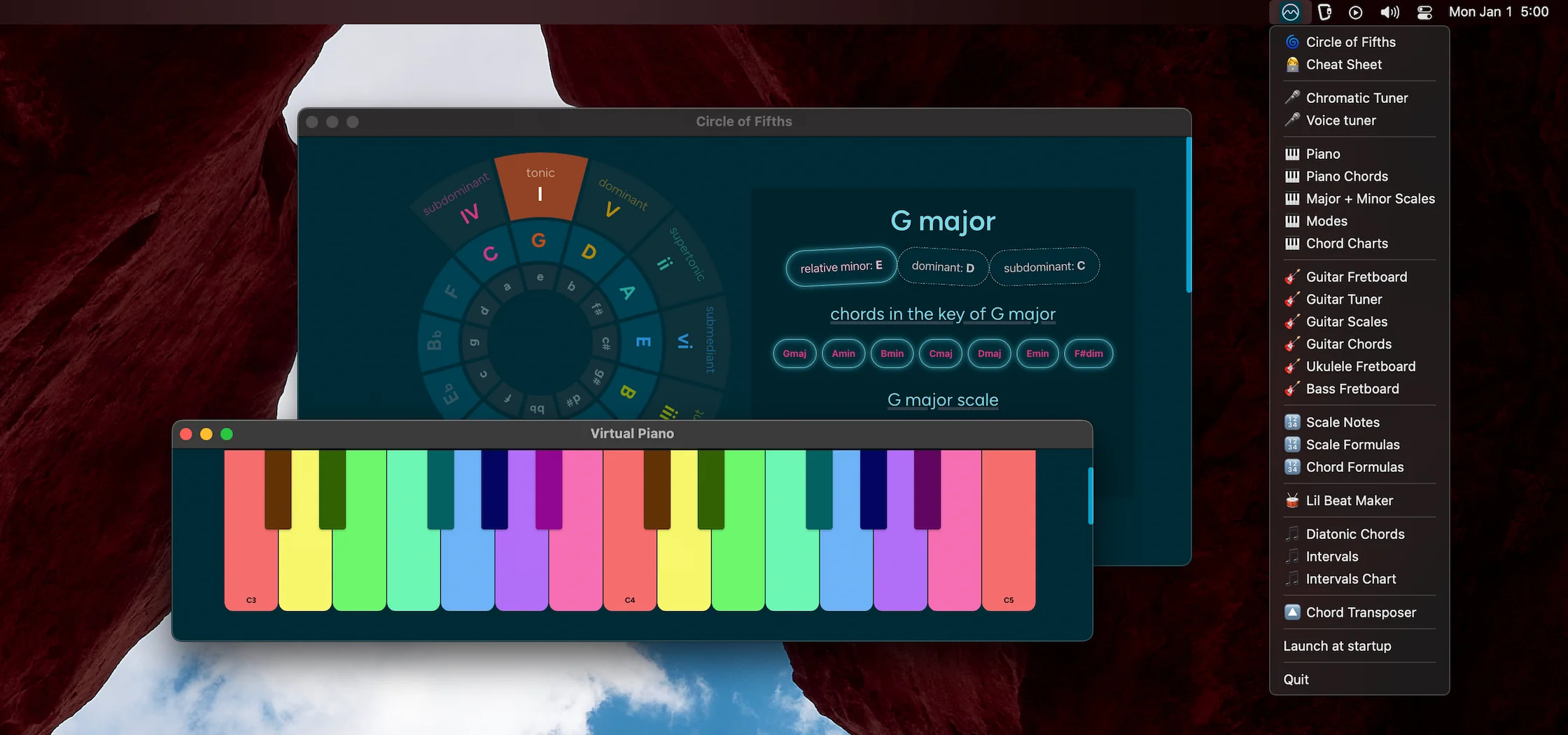✨ magical collection of interactive music theory tools & visual references to learn music online for free.
Major Scale
Modes of the Major Scale
Pentatonic Scale
Blues Scale
🤔 So, What is Music Theory?
🔤 Music theory is essentially the language of music (think alphabet, words, sentences, paragraphs,...) It's the set of guidelines and principles that we use to understand and describe how music works.
🎵 Music theory helps us understand things like melody, harmony, and form in music, and it also helps us communicate about music with each other.
🧐 At its core, music theory is all about understanding how different pitches, rhythms, and tones work together to create a cohesive musical piece.
🙃 It can seem a little bit complex, but it's also super interesting and can help you appreciate music on a whole new level. It's an invaluable tool in learning to create/compose our own music.
Some of the most important concepts in music and music theory include:
-
Pitch
Pitch refers to how high or low a sound is perceived. Pitch is determined by the frequency of the sound wave, with higher frequencies producing higher pitches and lower frequencies producing lower pitches. -
Timbre
The quality of a musical sound that distinguishes different types of sounds, even when they have the same pitch and loudness. Timbre is often described as the "color" or "tone" of a sound. -
Notes
A note refers to a specific pitch that can be represented by a letter of the alphabet. The musical alphabet consists of the letters A, B, C, D, E, F and G, which are used to name the pitches of a musical scale. -
Scales
A scale is a series of pitches arranged in ascending or descending order. There are many different types of scales, including major, minor, pentatonic and chromatic scales. -
Key
A key is a group of pitches that form the basis of a musical composition, and it determines the tonality of the piece. A key is typically represented by a major or minor scale. -
Intervals
An interval is the distance between two notes. Intervals can be melodic (which occur between two notes played in succession) or harmonic (which occur between two notes played simultaneously). -
Chords
A chord is a group of three or more pitches played together. Chords are an important part of music theory because they provide the harmonic foundation for a piece of music. -
Harmony
Harmony refers to the sounding of three or more pitches at the same time. It's created by the combination of different chords and melodies and is an important element of a piece of music. -
Melody
Melody refers to the tune or main theme of a piece of music. Melody is usually comprised of a series of notes arranged in a specific order and played over a period of time. -
Rhythm
Rhythm refers to the way in which the various elements of a piece of music are organized in time. It's key aspect of music and includes elements such as tempo, meter, and time signature. -
Form
Form refers to the structure of a piece of music. It's determined by the way in which the different sections of a piece are arranged and the way in which they relate to one another. - More music definitions →
📖 Check out this guide for a more complete introduction to music theory.



